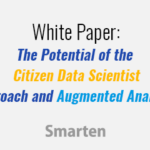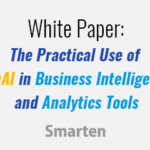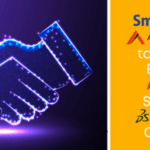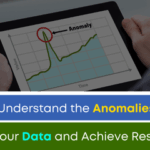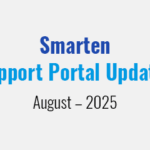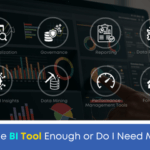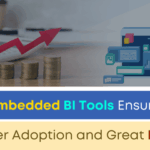This article describes the analytical technique of multilayer perceptrons for classification.
What is a Multilayer Perceptron Classifier?
Multilayer perceptron (MLP) is a technique of feed-forward artificial neural networks using a back propagation learning method to classify the target variable used for supervised learning.
MLP’s can be applied to complex non-linear problems, and it also works well with large input data with a relatively faster performance. The algorithm tends to achieve the same accuracy ratio even with smaller data.
Let’s look at an example of Multilayer perceptron analysis, involving the potential for opportunity results, based on factors like Revenue, Total days(qualified), Total days(closing), Ratio days, Sales Stage.
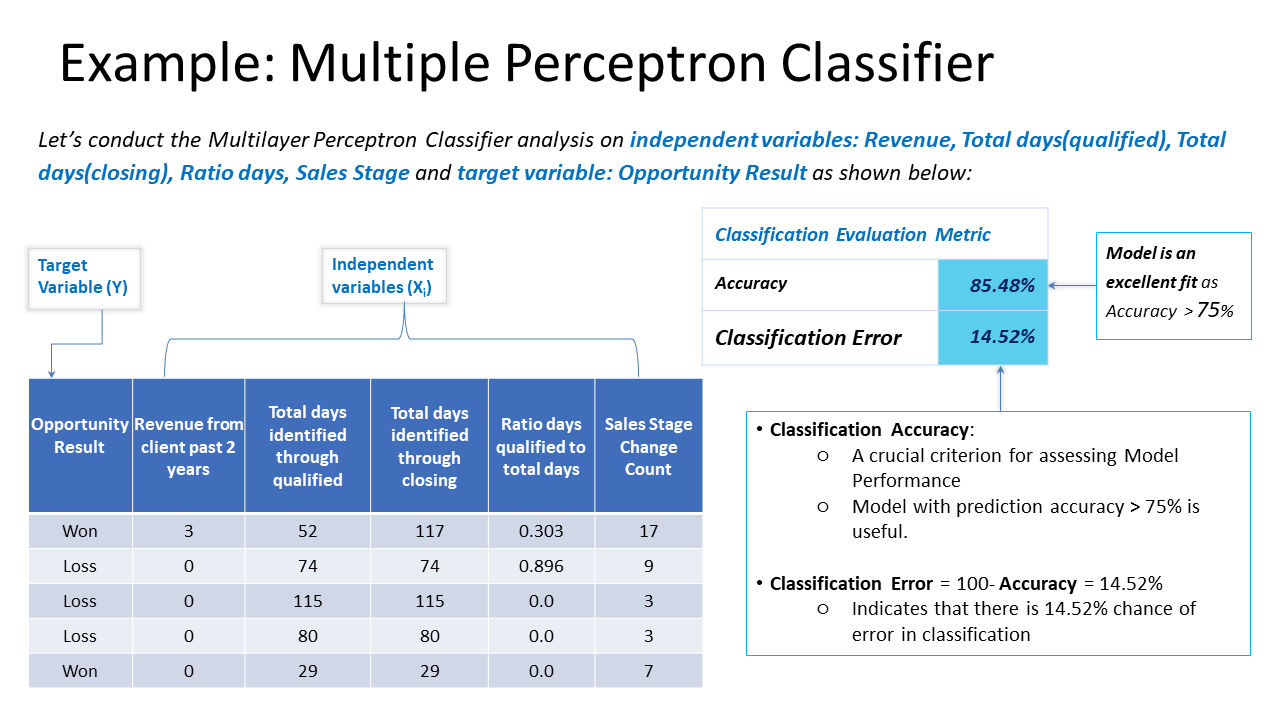
How is a Multilayer Perceptron Classifier Used in Analysis?
Let’s look at two use cases where a Multilayer Perceptron Classifier might be applied and how it would be useful to the organization.
Business Use Case 1
Business Problem: Predict employee attrition.
Identifying the important factors that lead to employee attrition.
Target/dependent variable:
- Attrition
Predictor/independent variables:
- Overtime
- Monthly Income
- Total Working Years
- Stock Option Level
- Relationship Satisfaction
Business Benefit:
The predictive model will help us identify various factors that affect the resignation or retirement decisions made by the employee. This will help the company identify the criteria it needs to work on to retain employees in the company.
Business Use Case 2
Business Problem: Predicting medication type needed for patients in a hospital.
Identifying the right type of medication/treatment for various patients admitted in the hospital.
Target/dependent variable:
- Target (Drug, Solo Insulin)
Predictor/independent variables:
- Time Spent in Hospital
- Number of Medications
- Number of Procedures
- Patient’s Weight
- Medical Specialty Ward
Business Benefit:
Filtering through the most important factors of a patient’s diagnosis to help choose the most appropriate type of medication (Drug, Solo Insulin) for the patient.
The Smarten approach to augmented analytics and modern business intelligence focuses on the business user and provides tools for Advanced Data Discovery so users can perform early prototyping and test hypotheses without the skills of a data scientist. Smarten Augmented Analytics tools include Assisted Predictive Modeling, Smart Data Visualization, Self-Serve Data Preparation, Clickless Analytics with natural language processing (NLP) for search analytics, Auto Insights, Key Influencer Analytics, and SnapShot monitoring and alerts. These tools are designed for business users with average skills and require no specialized knowledge of statistical analysis or support from IT or data scientists. Businesses can advance Citizen Data Scientist initiatives with in-person and online workshops and self-paced eLearning courses designed to introduce users and businesses to the concept, illustrate the benefits and provide introductory training on analytical concepts and the Citizen Data Scientist role.
The Smarten approach to data discovery is designed as an augmented analytics solution to serve business users. Smarten is a representative vendor in multiple Gartner reports including the Gartner Modern BI and Analytics Platform report and the Gartner Magic Quadrant for Business Intelligence and Analytics Platforms Report.



